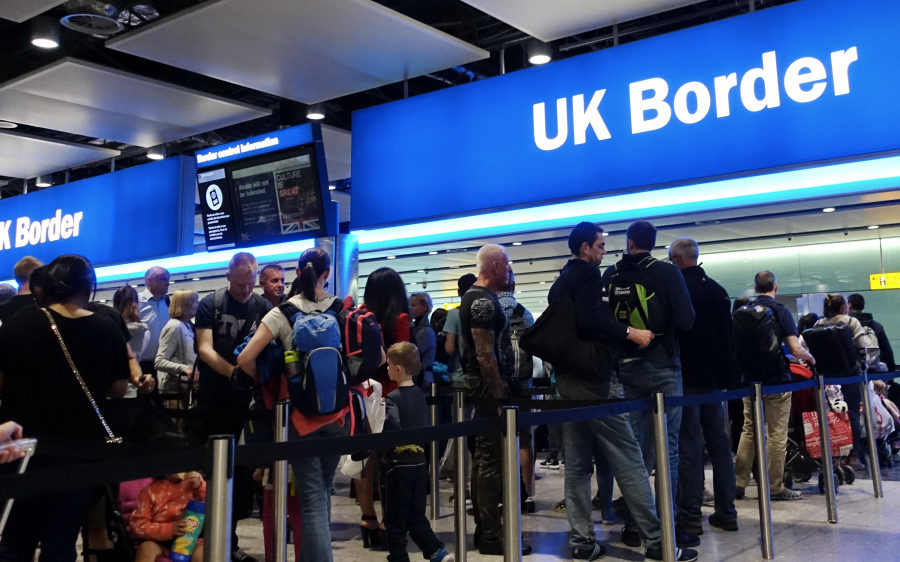
Ray Batt, Director of Global Government Solutions, Unisys looks at the importance data plays in providing information to those responsible for manning the borders
Across land, sea and air, the quantity of data collected at the border has increased significantly in recent years. Whether for passengers or cargo, information is now gathered every minute of the day, all with the aim of enhancing security, facilitating trade and improving outcomes.
But one thing hasn’t changed – and that’s the fact that people still have ultimate responsibility for manning the borders. So, while data is a hugely valuable resource, it will only improve security outcomes if officers on the ground receive timely information and have the capacity to turn that information into actionable intelligence. But all too often, it seems that isn’t the case.
More work, less resource: the challenge at the border
Border staff are having to process more people, more cargo and more risk than ever before. Compounding the issue, funding hasn’t necessarily risen in line with the amount of work that needs doing. Even with recruitment initiatives, there rarely seems to be enough money or people to keep up with the need – and in many instances, retiring staff haven’t been replaced. As a result, border organisations are suffering attrition in their workplace, and – critically – the value of knowledge gleaned over years of service is being lost.
In the days when border security was often a job for life, staff were able to accrue decades of experience and develop a carefully honed ability to identify likely risks and act upon suspicions. The value of this can’t be understated; after many years looking at cargo lists, for example, a highly skilled officer could generally spot a threat with ease. As such, officers were the ones who could turn data into actionable insight.
Although there is still a good number of highly skilled workers, too many staff are relatively new to this line of work, meaning they don’t yet have the training and experience to assess risks in this discerning way. The border clearance process has therefore become less precise, enabling more risk than it might once have done. And when inspectors rely on intuition instead of fact–based targeting, there’s also a higher risk of bias and fatigue affecting decisions.
A diminishing employee experience
This doesn’t just pose a risk in terms of security. It also contributes to the pressing issue of employee engagement. Working on the border frontline can be a demoralising task. Through rain, wind and shine, border agents work long shifts in a challenging environment. Although advancements in data-gathering mean there’s plenty of information about suspicious cargo, there’s often very little intelligence about where exactly the target might be concealed. As a result, officers can spend hours sifting through difficult-to-access loads on the basis of limited instructions – without actually having anything to show for it at the end of the day.
Another problem faced by officers is that sometimes they simply don’t have the right tools for the job, which is understandably frustrating. If they’re receiving insights, it can often feel ‘faceless’, as there’s no real communication between them and the people providing the information. And it sometimes seems targeting systems aren’t actually built with the end user in mind, with officers forced to carry out highly specific tasks using generic, multi-purpose tools.
A lack of digitalisation and a reliance on manual paperwork compounds this issue even further. After a long shift spent in sometimes difficult conditions, officers have to return to the desk to record their findings. While government agencies have tested use of mobile devices to do this, staff really need more robust tools – like tablets and ruggedised laptops with an application that facilitates the insights and collaboration needed.
Moving towards technology
The impetus for change is clear. To improve outcomes and the employee experience, border officers need a solution that can turn data into actionable intelligence, regardless of how new a border officer is to their role. Such an approach would also free up more experienced officers to focus on complex cases, while other employees hone their skills.
Fortunately, AI and predictive modelling have transformed the way data can be used, helping to identify issues and spot risks in a more sophisticated way than ever before. Advanced targeting analytics and collaboration solutions, like Unisys LineSight, can provide powerful insight for border agents, while also enabling the near real-time interaction needed to take advantage of others’ insights and experience.
Such an approach can help to tap into the impressive knowledge base held by highly skilled officers, turning experience into information which can then inform targeting algorithms. And by keeping knowledge in the system, not in the minds of employees, border standards can be maintained even as experienced officers are lost. So even the newest members of staff can perform effectively by harnessing information from their predecessors.
These technologies can also enhance the employee experience. Instead of a vague instruction to look in a certain container, officers can receive more tailored and specific guidance, turning the average officer’s shift into a much more rewarding experience. It’s not hard to see how this would improve employee engagement, which should in turn help to improve border officers’ performance even further.
Improving security, outcomes and engagement
As globalisation continues, life at the border is only going to become more complicated. While border organisations themselves don’t have the power to control this, they can invest in solutions that will improve security, outcomes and even staff engagement – ensuring that officers can continue to turn data into insight, regardless of the challenges they face.
image © 1000 Words / Shutterstock.com
To learn more about cyber security and how your business can stay protected from threats, visit the Cyber Essentials Online website.
If you would like to join our community and read more articles like this then please click here.







